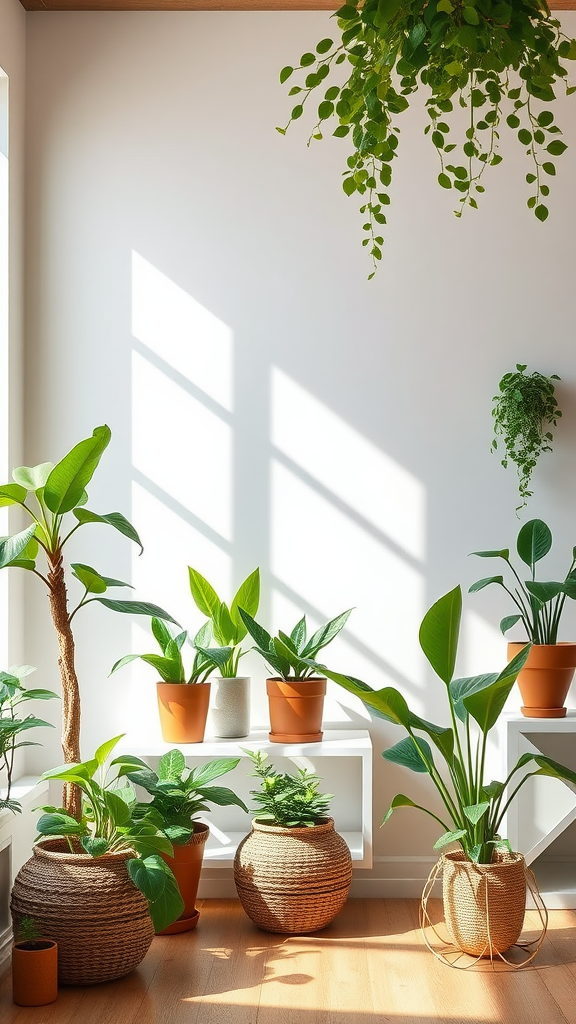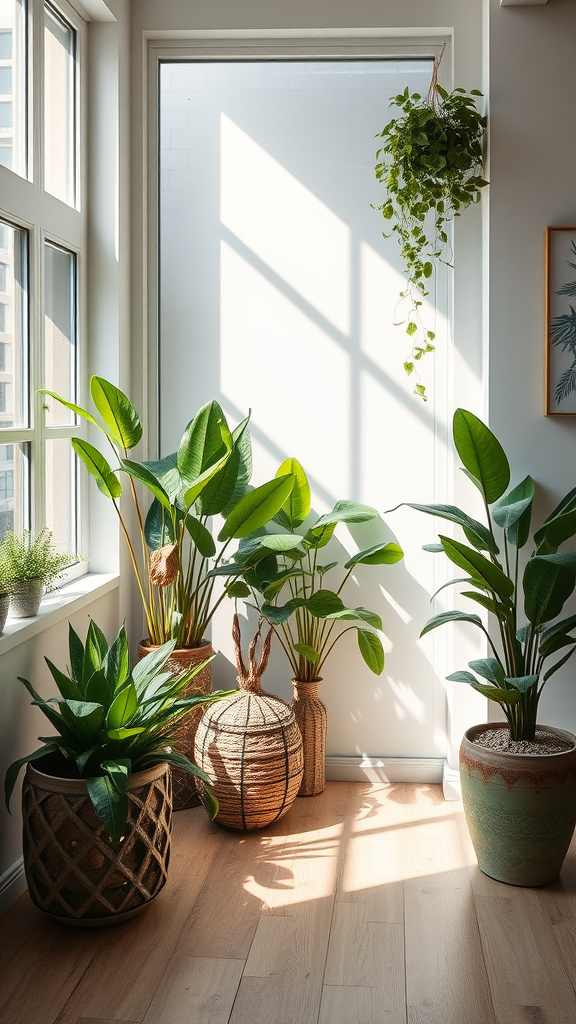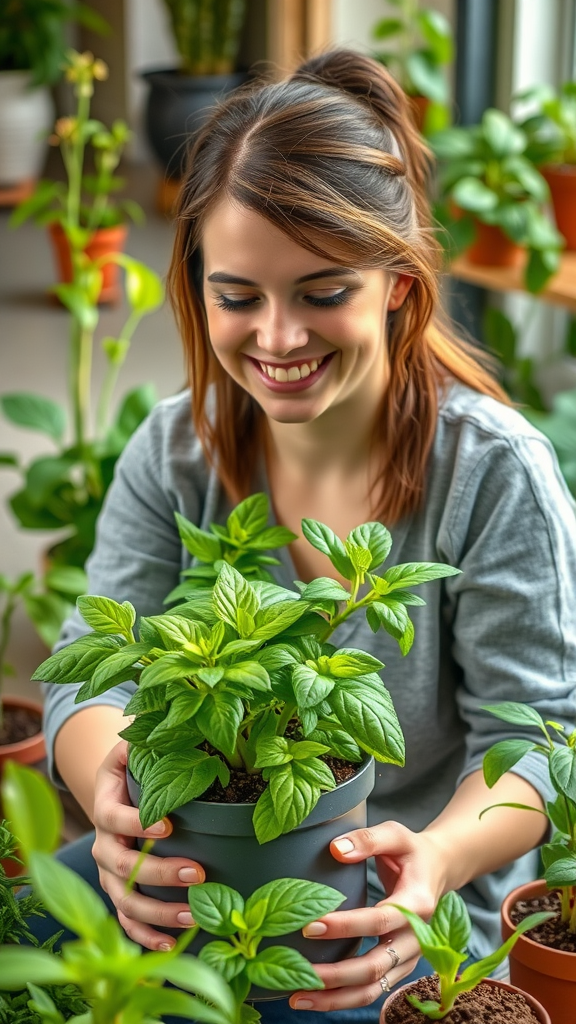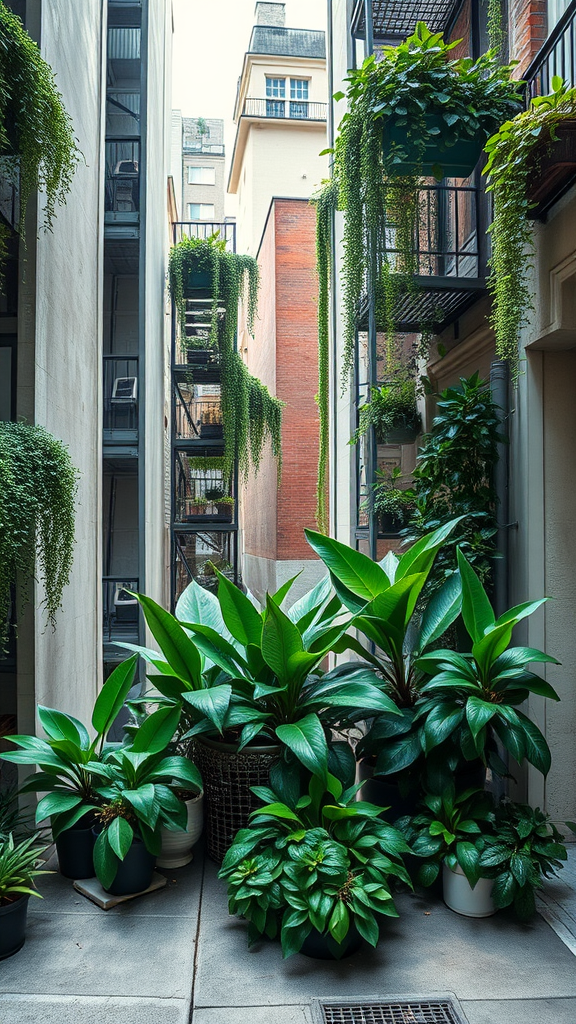The Role of Indoor Plants in Enhancing Sustainable Living
Creating a sustainable living environment is becoming more important as we face environmental challenges. One of the easiest and most effective ways to enhance sustainability at home is by incorporating indoor plants. Not only do they add beauty to your space, but they also provide numerous benefits that contribute to a more eco-friendly lifestyle.
Indoor plants play a significant role in improving air quality. They absorb carbon dioxide and release oxygen during photosynthesis, helping to purify the air you breathe. This natural air filtration helps to reduce the levels of harmful toxins and pollutants that can accumulate in indoor environments. Common air-purifying plants include:
- Spider Plant
- Peace Lily
- Snake Plant
- Areca Palm
- Bamboo Palm
By adding these plants to your home, you can create a healthier living atmosphere for you and your family.
Another significant advantage of indoor plants is their ability to conserve energy. Plants help regulate temperature by providing natural insulation. When you have indoor plants, they not only cool the air during the hot months by transpiring moisture but also retain warmth in colder months. This natural temperature regulation can potentially lower your reliance on heating and cooling systems, which is beneficial for your energy bills and the environment.
Indoor gardening also promotes biodiversity. By cultivating a variety of plants, you can create a mini-ecosystem in your home. This variety supports not only the plants themselves but also beneficial insects like bees and butterflies if you choose to place your plants outside during warmer months. You can create a beautiful and lifelike environment indoors that mimics outdoor ecosystems. Consider incorporating plants like:
- Ferns
- Cacti
- Succulents
These plants are not only low-maintenance, but they also attract pollinators, supporting local wildlife when grown in conjunction with outdoor gardens.
Planning your indoor garden can contribute to reducing waste. Many homeowners often discard food scraps, but you can use certain food waste to create a sustainable indoor garden. For example, you can grow green onions or herbs like basil and mint from kitchen scraps. Simply place the roots in water, and you’ll have fresh herbs for cooking without contributing to food waste. This frugality helps promote sustainable living and encourages you to think creatively about reusing materials.
Moreover, nurturing plants fosters a deeper connection with nature, improving mental well-being. Studies show that having indoor plants can reduce stress and boost mood. Taking care of these green friends can become a therapeutic activity, giving you a sense of accomplishment when you watch them grow. You should consider plants that are easy to care for if you’re a beginner, such as:
- Pothos
- ZZ Plant
- Rubber Plant
These plants require minimal upkeep and thrive in a variety of indoor conditions, making them an ideal starting point.
Hot weather can make indoor spaces feel stuffy. Fortunately, many plants can add moisture to the air and improve humidity levels. Plants such as the Boston Fern or the Rubber Plant can help balance humidity, making your home more comfortable. This is especially important in dry climates or during the winter when indoor heating can lead to uncomfortably dry air.
Indoor plants can enhance your home’s aesthetic appeal, leading to a more inviting atmosphere. You can create a calming sanctuary filled with greenery and life by using various types of plants. This biophilic design helps merge nature with your living spaces, adding visual interest and promoting a sense of peace. You could use plants in different corners or clusters to make an impactful statement without much effort.
Indoor plants into your living space is a simple yet powerful way to embrace sustainable living. From improving air quality to promoting biodiversity, and enhancing your mood to reducing waste, the benefits are clear. Start small with a few easy-to-care-for plants and gradually expand your green collection. By doing so, you not only beautify your surroundings but also contribute to a healthier planet.
Simple Steps to Integrate Green Practices into Your Daily Routine
Are you looking for ways to integrate green practices into your daily routine? Embracing a more sustainable lifestyle can be easier than you think. By making small changes, you can significantly impact the environment around you. Here are some simple yet effective steps to help you get started on your green journey.
Start with Your Morning Routine
Your day usually begins in the morning, making it the perfect time to incorporate green practices. Here are some ideas:
- Choose a Reusable Water Bottle: Instead of buying single-use plastic bottles, invest in a reusable water bottle. Fill it up each morning to reduce waste.
- Opt for Eco-Friendly Coffee: If you love coffee, consider using a French press or a reusable coffee pod. This eliminates the waste from disposable coffee filters and pods.
- Use Natural Toiletries: Switch to organic and biodegradable personal care products. They are better for your health and the environment, minimizing chemical runoff.
Be Mindful of Your Commute
Your daily commute can greatly affect your carbon footprint. Here are some eco-friendly alternatives:
- Carpool or Use Public Transportation: Share rides with coworkers or neighbors, or take public transportation whenever possible to reduce the number of vehicles on the road.
- Bicycle or Walk: If you live close enough, consider biking or walking. It’s not only good for the planet but also beneficial for your health.
- Work from Home: If your job allows it, working from home can save energy and reduce pollution by minimizing travel.
Revamp Your Lunch Habits
Lunch is a time when many of us unwittingly generate waste. Here are some green tips to try:
- Bring Your Own Lunch: Packing your lunch in reusable containers prevents disposable packaging waste. Choose stainless steel, glass, or BPA-free containers.
- Snack Responsibly: Opt for bulk snacks over pre-packaged ones. This reduces plastic and packaging waste and often saves money.
- Choose Local Products: If you buy lunch, select restaurants that source food locally. This reduces the environmental impact of transportation.
Make Sustainable Choices at Home
Your home is a central aspect of your green lifestyle. Here are some ways to incorporate sustainability:
- Reduce Energy Consumption: Switch off lights and unplug devices when not in use. Consider using energy-efficient appliances to lower your electricity usage.
- Compost Your Organic Waste: Start a compost bin for food scraps and yard waste. This reduces landfill contributions and creates nutrient-rich soil for your garden.
- Switch to LED Lighting: Replace incandescent bulbs with LED lights. They use less energy and last significantly longer.
Embrace Green Practices on Weekends
Use your weekends as an opportunity to dive deeper into green living:
- Shop at Local Farmers’ Markets: Buy fresh produce directly from local farmers. This supports the community and reduces carbon emissions from shipping.
- Plant a Garden: Even a small herb garden on your windowsill can help you reduce reliance on store-bought herbs and vegetables.
- Plan an Eco-Friendly Project: Spend your time volunteering for community clean-up events or tree-planting initiatives to make a positive impact.
Engage Your Family and Friends
Integrating green practices is easier when everyone is on board:
- Involve Your Family: Teach your kids about sustainability by involving them in gardening or recycling efforts. Make it a fun family activity.
- Host Eco-Friendly Gatherings: Encourage your friends to bring reusable items and local food dishes to gatherings to practice sustainability together.
- Share Resources: Exchange tips and resources with friends and family. This builds a supportive community focused on sustainable living.
By implementing these simple steps into your daily routine, you will not only contribute to a healthier planet but also inspire others to follow your lead. Small actions accumulate, creating a significant positive impact on the environment. Start today, and watch as your sustainable lifestyle takes shape!
Conclusion
Creating a sustainable home with plants is more than just a trend; it’s a meaningful commitment to enhancing your living environment and contributing positively to the planet. Indoor plants play a vital role in this journey, as they purify the air we breathe, reduce stress levels, and bring a touch of nature indoors. By incorporating a variety of plants into your living space, you can enjoy a healthier atmosphere while simultaneously enhancing the aesthetics of your home.
Integrating green practices into your daily routine doesn’t have to be overwhelming. Start small by implementing simple habits like watering your plants with leftover water from cooking or using natural fertilizers. Composting kitchen scraps and recycling materials can also minimize waste and benefit your plants. These tiny changes not only support your greenery but also instill a deeper awareness of your environmental impact.
By cultivating a sustainable home with plants, you engage in two significant actions: improving your quality of life and protecting the planet. As you embrace green practices, you create a nurturing space for both yourself and your plants. Remember, every little step counts. So, plant a seed of sustainability today and watch it grow into a beautiful, eco-friendly haven. With your dedication, you contribute to a healthier world while enjoying the countless benefits that come from living in harmony with nature. Embrace this green journey and inspire others to do the same!





